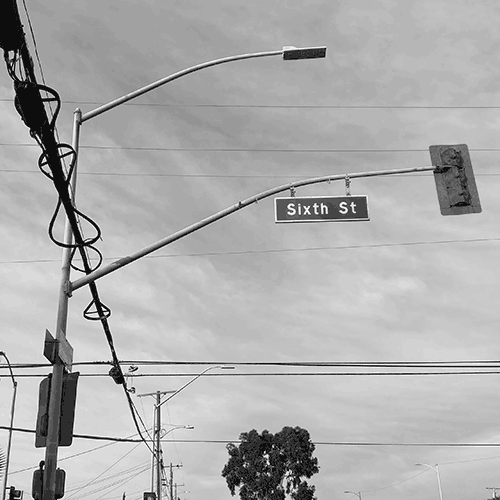Amour (Love)
A is for “Amour,” the French word for love, representing the deep, all-consuming emotions that love can evoke. Love is never simple, and neither is the journey of the tortured poet.

A is for “Amour,” the French word for love, representing the deep, all-consuming emotions that love can evoke. Love is never simple, and neither is the journey of the tortured poet.

B is for “Betrayal,” one of the most painful experiences explored in The Tortured Poets Department. In a world full of blurred lines, betrayal is the wound that lingers long after the words are spoken. This letter evokes the feeling of being misled, yet it sparks the poet's most profound creativity.

C is for “Chaos,” representing the internal turmoil that swirls within the tortured poet. Emotions often feel like a whirlwind, with highs and lows that collide in powerful ways. Taylor channels this chaos in her lyrics, capturing the unpredictability of human emotions.

D is for “Desire,” the longing for something—whether it’s a person, a feeling, or a sense of purpose. The tortured poet’s desire is often unrequited, and this longing fuels their words, art, and journey through life's emotional labyrinth.

E is for “Eclipse,” a moment where light fades, and darkness takes over. The tortured poet often finds themselves in these moments of shadow and introspection. Taylor explores the complex relationship between light and dark in love, and the eclipse represents that fleeting sense of loss before finding the light again.

F is for “Fortnight,” symbolizing the passage of time—two weeks that can feel like an eternity and a fleeting moment. A fortnight represents the brief but intense period of emotional turmoil or change that can feel endless in the moment.

G is for “Ghosts,” the lingering specters of past relationships and memories that never fade. The tortured poet is haunted by these ghosts, which are woven into her storytelling, giving her music a sense of bittersweet nostalgia.

H is for “Heartbreak,” perhaps the album's most defining theme. Taylor’s exploration of heartache and the aftermath of lost love is a cornerstone of The Tortured Poets Department. The poet's pain fuels their creativity but leaves a permanent scar.

I is for “Isolation,” the loneliness accompanying the creative process. In her most vulnerable moments, Taylor describes the solitude of being misunderstood or heartbroken. The tortured poet often feels disconnected, finding solace only in their art.

J is for “Jaded,” the weariness from being in love too many times or giving too much of oneself. After the highs and lows, the poet may feel emotionally exhausted—ready to close their heart off but still drawn to the allure of new experiences.

K is for“Kaleidoscope,” symbolizing how emotions shift and change, much like a kaleidoscope turns and morphs. The poet’s feelings constantly change, making it impossible to hold on to just one. Taylor embraces this dynamic approach to capturing life's fleeting moments.

L is for “Lament,” the mournful cry of a soul who has loved and lost. Taylor expresses that aching, sorrowful feeling when she experiences the loss of her life in this person she thought would have been the one. The tortured poet often laments their choices, wondering how things could’ve been different.

M is for “Mystery,” the unknowns in relationships that both frustrate and intrigue. Taylor’s storytelling often plays with the theme of mystery—whether it’s about the hidden layers of a person or the enigmatic nature of love itself. The poet is constantly trying to unravel the puzzle.

N is for “Nostalgia,” the bittersweet longing for the past. The poet often looks back at old memories with a sense of longing and reflection. Taylor’s lyrics frequently tap into this emotional pull, evoking nostalgia for past loves or simpler times with warmth and regret.

O is for “Obsession,” the overwhelming thoughts and emotions that take over. In The Tortured Poets Department, obsession appears as the intense, sometimes unhealthy fixation on a person, a relationship, or an idea. It’s a force that drives the poet, leaving them feeling consumed.

P is for “Paradox,” the contradictory nature of love, emotions, and life itself. Taylor’s music often explores these contradictions—where joy and pain coexist, love can be both thrilling and painful, and clarity can come from moments of confusion.

Q is for “Quicksand,” that feeling of being stuck in a situation where every attempt to escape only pulls you deeper. The poet sometimes feels trapped by their emotions or their past, with no easy way out. This reflects the struggle of trying to move forward when you're sinking in the weight of your feelings.

R is for “Regret,” the painful realization of missed chances, wrong turns, or things left unsaid. Taylor’s songs are often steeped in the raw emotion of regret, as the tortured poet ponders decisions that can’t be undone but shape who they become.

S is for “Surrender,” the acceptance that comes when the poet gives in to their emotions, allowing vulnerability and openness. Taylor beautifully captures the moments of surrender in relationships—when you let go and give yourself entirely to someone else, for better or worse.

T is for “Torment,” the agonizing struggle within the tortured poet’s heart and mind. It symbolizes the emotional pain, the inner conflict, and the relentless mental anguish that drives their creativity. The fire fuels the poet’s pen, turning pain into poetry and heartache into art. In The Tortured Poets Department, torment is the catalyst for self-expression, even when it feels like the soul is being torn apart.

U is for “Unreciprocated,” the painful reality of loving someone who doesn’t return your feelings. Taylor has explored this theme in many of her songs—where love isn’t returned in the way the poet hopes.

V is for “Vulnerability,” the willingness to open up and expose one's innermost thoughts and feelings. This is a key element in Taylor’s storytelling—laying bare the raw emotions of love, loss, and self-reflection. The tortured poet is constantly torn between protecting themselves and risking vulnerability for connection.

W is for “Whispers,” the soft, quiet voices that linger in the background. These could be the words of doubt, regret, or memories that echo in the poet’s mind. They might also represent the subtle emotions that aren’t always said out loud but are felt deeply within.

X is for “Xenon,” a rare, elusive element that symbolizes unique, hard-to-find moments in life. In the tortured poet’s journey, these moments are like fleeting flashes of clarity, beauty, or connection that can’t be fully grasped but leave a lasting impression.

Y is for “Yearning,” the deep desire to be something or to find someone. This constant feeling drives the tortured poet, pushing them forward in their search for meaning and connection. Taylor conveys this yearning for both personal fulfillment and romantic love so vividly.

Z is for “Zenith,” the peak or high point of emotional realization and artistic achievement. After the tumult of emotions and experiences, the poet reaches a moment of clarity and self-understanding. In Taylor’s world, this represents the culmination of her journey through the highs and lows—the triumph of personal expression.